Further Investigations into the Capacitive Imaging Technique Using a Multi-Electrode Sensor
Abstract
:1. Introduction
2. Principle of the Multi-Electrode Sensor for Defect Detection
3. Simulation Analysis of the Multi-Electrode Sensor for Defect Detection
3.1. FEM Models and the Electric Potential Lines
3.2. MSDs, the Capacitances and the DCRs
4. Experiments of the Multi-Electrode Sensor
4.1. Defects on the Surface of the Fiberglass Board
4.2. Defects Buried in the Fiberglass Board
4.3. Defects within the Fiberglass Board and Aluminum Plate
5. Discussions and Conclusions
Author Contributions
Funding
Conflicts of Interest
References
- Okamoto, K.; Maeda, T.; Haga, K. Dielectric property study of copper ionic migration at insulation layer on metal base PWB. J. Jpn. Inst. Interconnecting Packag. Electron. Circuits 2010, 12, 418–424. [Google Scholar] [CrossRef]
- Lizzit, S.; Larciprete, R.; Lacovig, P.; Dalmiglio, M.; Orlando, F.; Baraldi, A.; Gammelgaard, L.; Barreto, L.; Bianchi, M.; Perkins, E.; et al. Transfer-free electrical insulation of epitaxial graphene from its metal substrate. Nano Lett. 2012, 12, 4503–4507. [Google Scholar] [CrossRef] [PubMed]
- Al-Sanea, S.A.; Zedan, M.F. Improving thermal performance of building walls by optimizing insulation layer distribution and thickness for same thermal mass. Appl. Energy 2011, 88, 3113–3124. [Google Scholar] [CrossRef]
- Jiang, Y.; Liu, M.; Zhang, W.; Lan, W.; Gai, J.; Ren, A.; Jiang, Y. Corrosion survey for field joints of long-distance thermal insulated pipeline. Corros. Sci. Prot. Technol. 2017, 29, 323–327. [Google Scholar]
- Zhang, Y.M.; Tan, T.K.; Xiao, Z.M.; Zhang, W.G.; Ariffin, M.Z. Failure assessment on offshore girth welded pipelines due to corrosion defects. Fatigue Fract. Eng. Mater. Struct. 2016, 39, 453–466. [Google Scholar] [CrossRef]
- Eibach, S.; Moes, G.; Hou, Y.J.; Zovickian, J.; Pang, D. Unjoined primary and secondary neural tubes: Junctional neural tube defect, a new form of spinal dysraphism caused by disturbance of junctional neurulation. Child’s Nerv. Syst. 2016, 33, 1–15. [Google Scholar] [CrossRef] [PubMed]
- Tan, M.Y.J.; Varela, F.; Huo, Y.; Mahdavi, F.; Forsyth, M.; Hinton, B. New electrochemical methods for visualizing dynamic corrosion and coating disbondment processes on simulated pipeline conditions. Corros. Mater. 2017, 42, 70–74. [Google Scholar]
- Nazir, H.; Khan, Z.; Saeed, A. A novel non-destructive sensing technology for on-site corrosion failure evaluation of coatings. IEEE Access 2018, 6, 1042–1045. [Google Scholar] [CrossRef]
- Liu, Y.; Pei, S.; Fu, W.; Zhang, K.; Ji, X.; Yin, Z. The discrimination method as applied to a deteriorated porcelain insulator used in transmission lines on the basis of a convolution neural network. IEEE Trans. Dielectr. Electr. Insul. 2018, 24, 3559–3566. [Google Scholar] [CrossRef]
- Yin, X.; Hutchins, D.A. Non-destructive evaluation of composite materials using a capacitive imaging technique. Compos. Part B 2012, 43, 1282–1292. [Google Scholar] [CrossRef]
- Yin, X.; Hutchins, D.A.; Diamond, G.G.; Purnell, P. Non-destructive evaluation of concrete using a capacitive imaging technique: Preliminary modelling and experiments. Cem. Concr. Res. 2010, 40, 1734–1743. [Google Scholar] [CrossRef] [Green Version]
- Yin, X.; Hutchins, D.A.; Chen, G.; Li, W.; Xu, Z. Studies of the factors influencing the imaging performance of the capacitive imaging technique. NDT & E Intern. 2013, 60, 1–10. [Google Scholar] [CrossRef]
- Yin, X.; Hutchins, D.; Hutchins, D.A.; Chen, G.; Li, W. Investigations into the measurement sensitivity distribution of coplanar capacitive imaging probes. NDT & E Intern. 2013, 58, 1–9. [Google Scholar] [CrossRef]
- Yang, W.Q.; Stott, A.L.; Beck, M.S.; Xie, C.G. Development of capacitance tomographic imaging systems for oil pipeline measurements. Rev. Sci. Instrum. 1995, 66, 4326–4332. [Google Scholar] [CrossRef]
- Meribout, M.; Saied, I.M. Real-time two-dimensional imaging of solid contaminants in gas pipelines using an electrical capacitance tomography system. IEEE Trans. Ind. Electron. 2017, 64, 3989–3996. [Google Scholar] [CrossRef]
- Martin, R.; Ortiz-Alemán, C.; Rodríguez Castellanos, A. Multiphase flow reconstruction in oil pipelines by capacitance tomography using simulated annealing. Geofísica Internacional 2015, 44, 241–250. [Google Scholar]
- Montalvo, C.; García-Berrocal, A.; Blázquez, J.; Balbás, M. Application of the monte carlo method for capacitive pressure transmitters surveillance in nuclear power plants. J. Dyn. Syst. Meas. Contr. 2012, 134, 1338–1343. [Google Scholar] [CrossRef]
- Mariani, A.; Blacka, M.J.; Cox, R.J.; Coghlan, I.R.; Carley, J.T. Wave overtopping of coastal structures. physical model versus desktop predictions. J. Coastal Res. 2009, 25, 534–538. [Google Scholar]
- Cassani, D. Existence and non-existence of solitary waves for the critical Klein–Gordon equation coupled with Maxwell’s equations. Nonlinear Anal. Theory Methods Appl. 2017, 58, 733–747. [Google Scholar] [CrossRef]
- Collinson, G.; Mitchell, D.; Xu, S.; Glocer, A.; Grebowsky, J.; Hara, T.; Lillis, R.; Espley, J.; Mazelle, C.; Sauvaud, J.-A.; et al. Electric Mars: A large trans-terminator electric potential drop on closed magnetic field lines above Utopia Planitia. J. Geophys. Res. Space Phys. 2017, 122, 2260–2271. [Google Scholar] [CrossRef]
- Helsdon, J.H., Jr.; Gattaleeradapan, S.; Farley, R.D.; Waits, C.C. An examination of the convective charging hypothesis: Charge structure, electric fields and Maxwell currents. J. Geophys. Res. 2002, 107, 9–26. [Google Scholar] [CrossRef]
- Peng, J.; Wu, Y.; Qiu, J.; Ji, H.; Wang, Y. Development and test of multi-channel charge amplifier based on ARM. Piezoelecs. & Acoustoptcs. 2017, 39, 211–215. [Google Scholar]
- Sasao, T.; Nagayama, S.; Butler, J.T. Numerical function generators using LUT cascades. IEEE Trans. Comput. 2007, 56, 826–838. [Google Scholar] [CrossRef]
- Carminati, M.; Gervasoni, G.; Sampietro, M.; Ferrari, G. Note: Differential configurations for the mitigation of slow fluctuations limiting the resolution of digital lock-in amplifiers. Rev. Sci. Instrum. 2016, 87, 296–297. [Google Scholar] [CrossRef] [PubMed]
- Kong, J.; Su, H.; Chen, Z.-Q.; Dong, C.-F.; Qian, Y.; Gao, S.-S.; Zhou, C.-Y.; Lu, W.; Ye, R.-P.; Ma, J.-B. Development of multi-channel gated integrator and PXI-DAQ system for nuclear detector arrays. Nucl. Instrum. Methods Phys. Res. Sect. A 2010, 622, 215–218. [Google Scholar] [CrossRef]


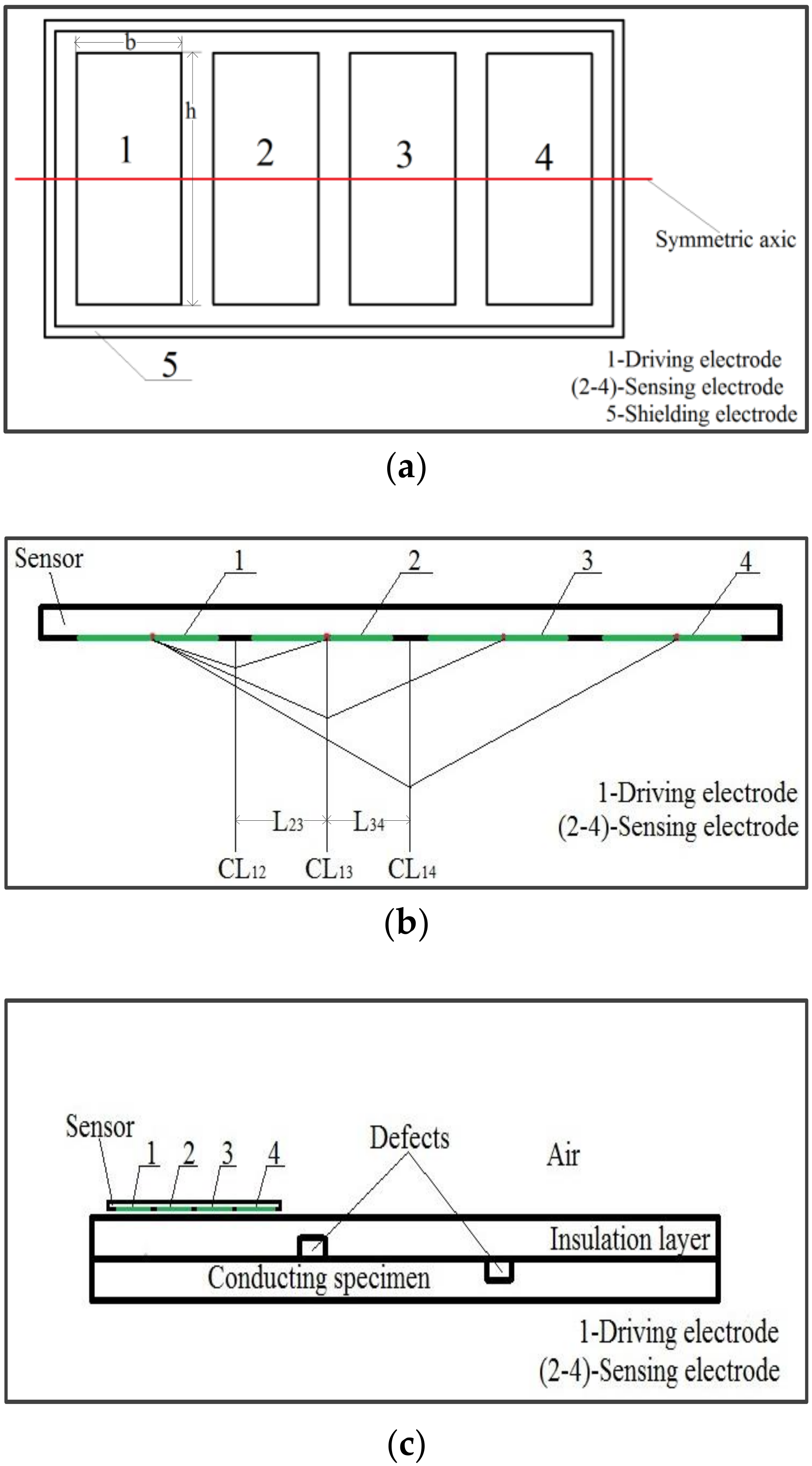
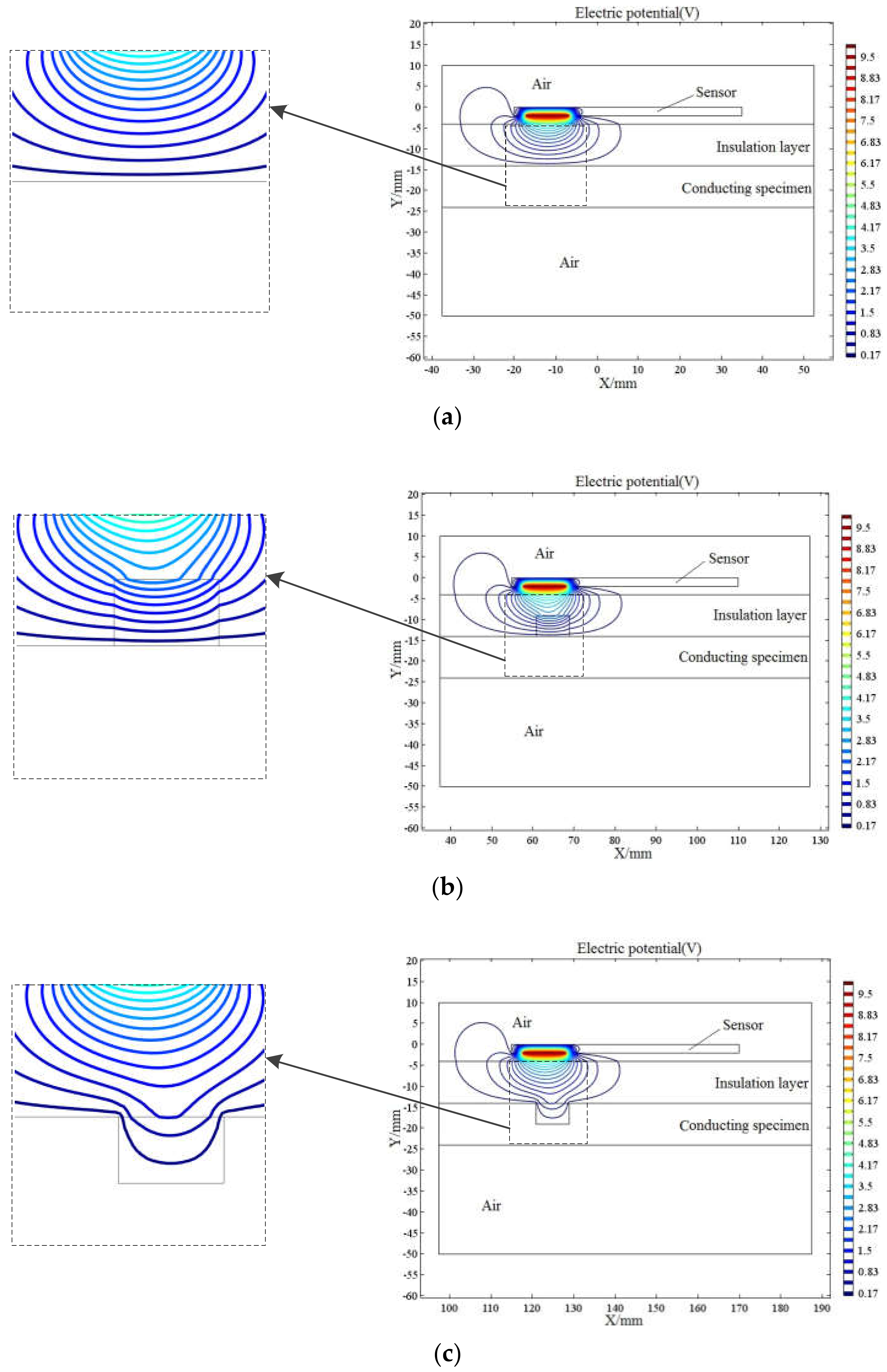


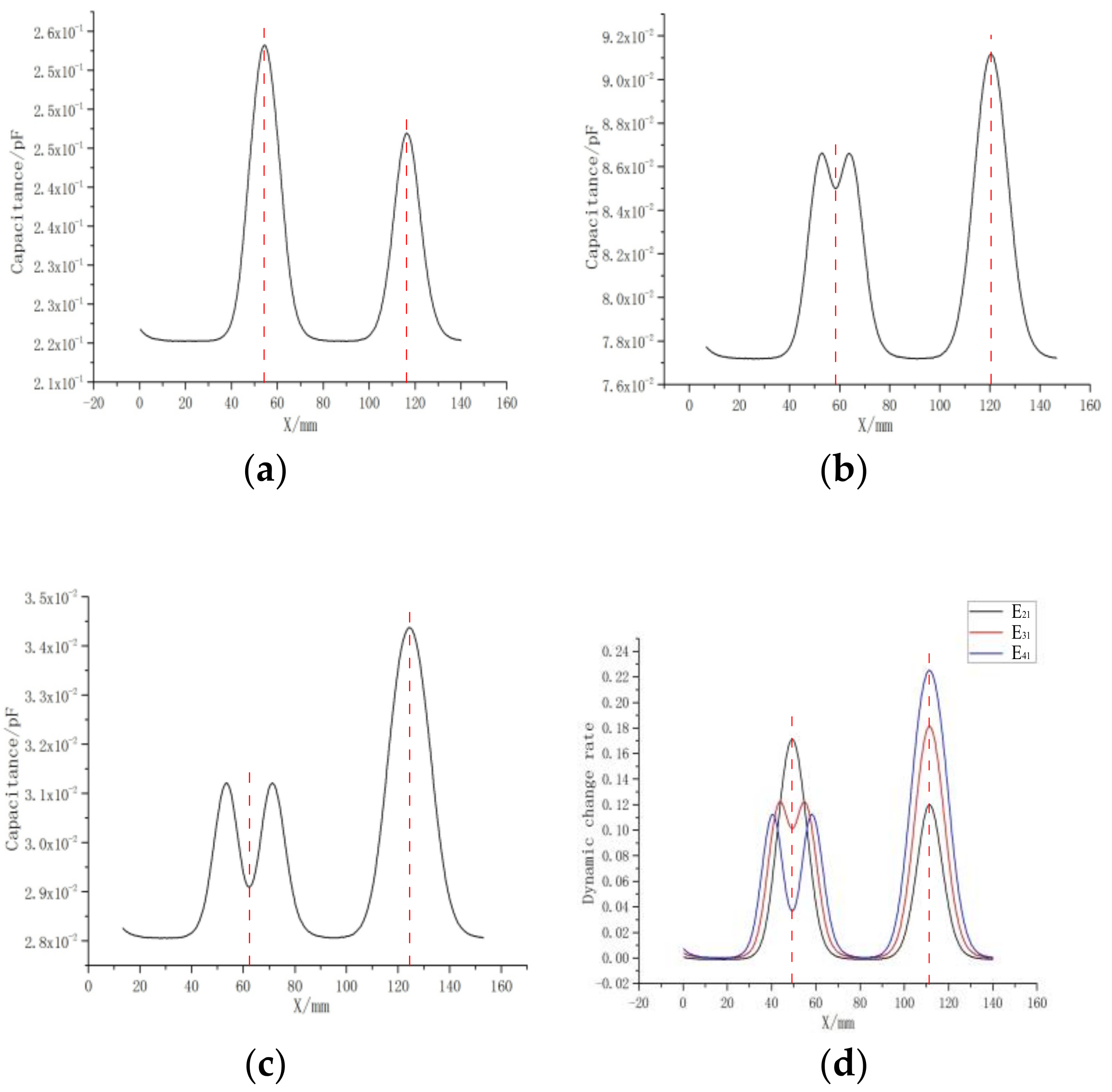
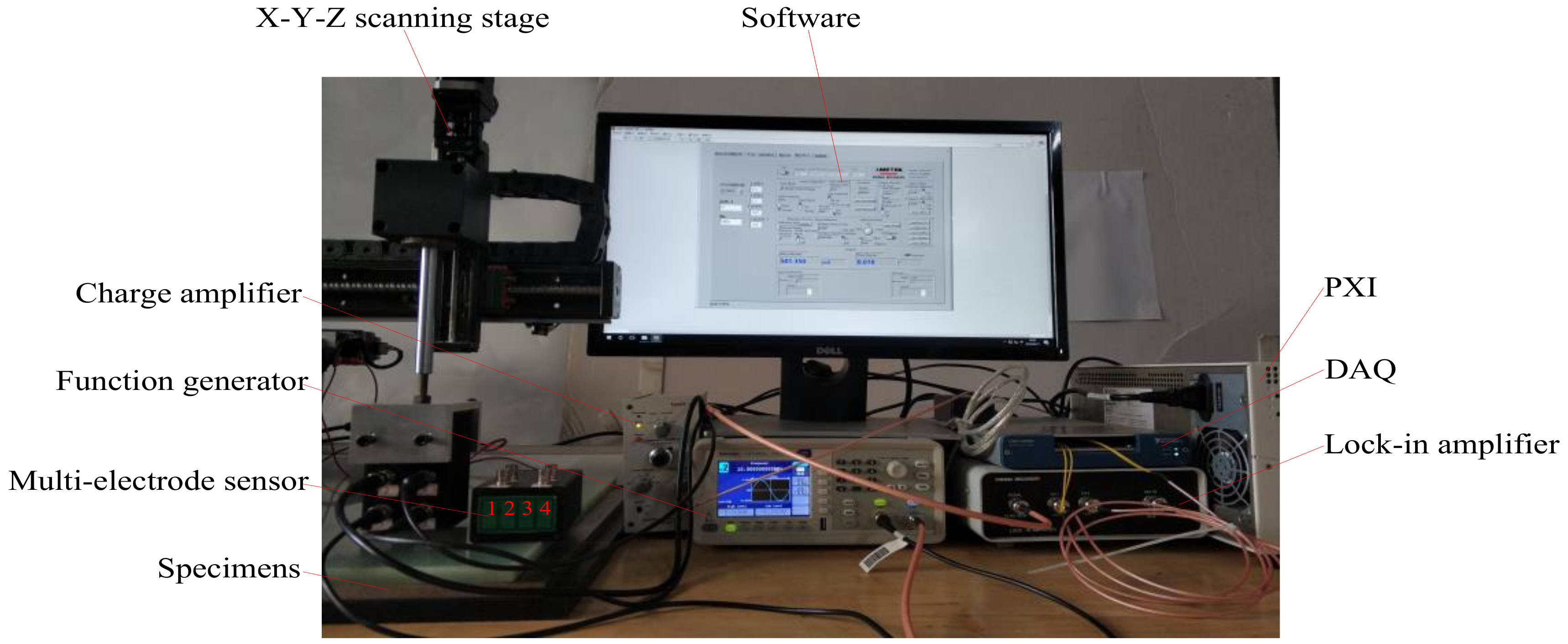


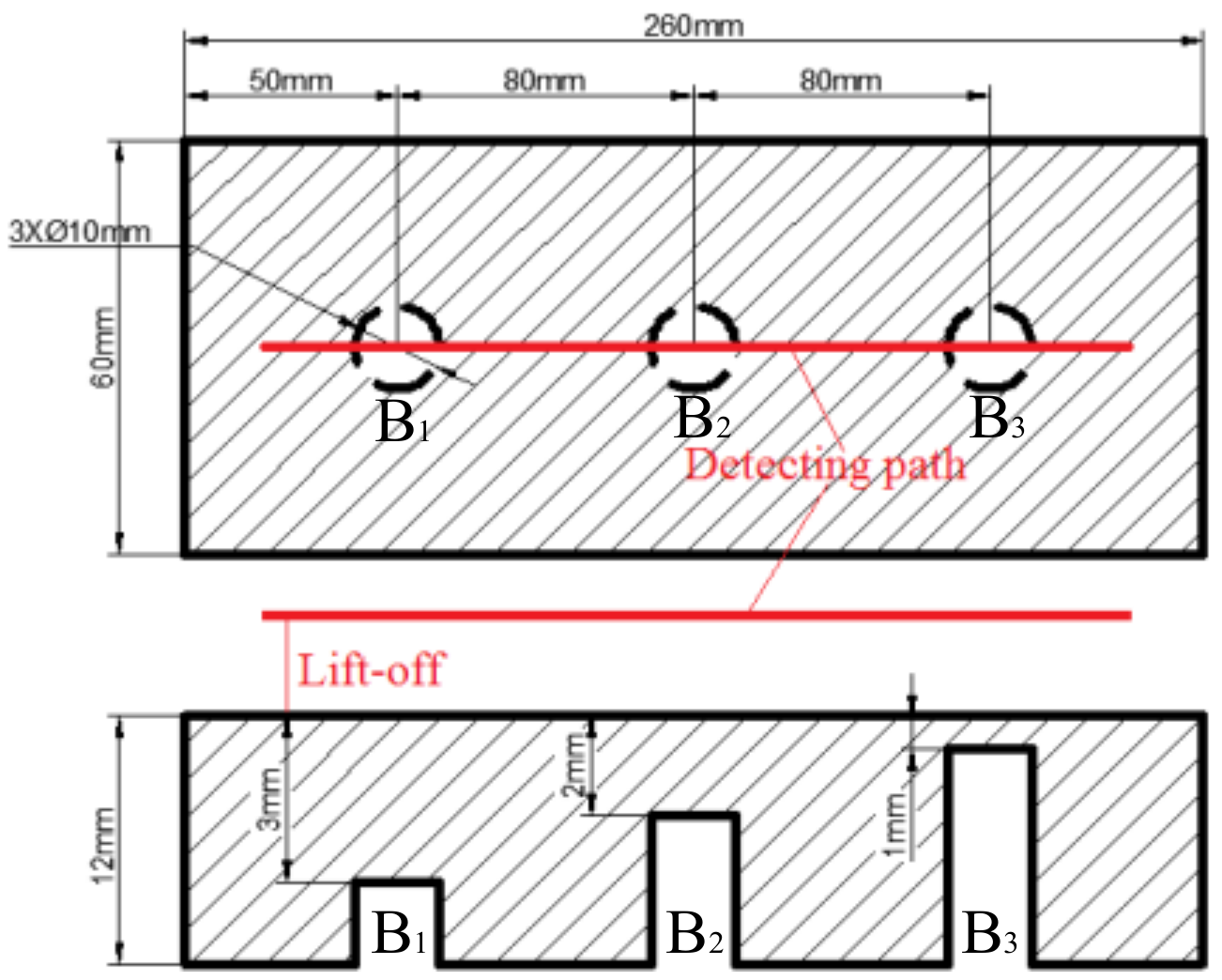



© 2018 by the authors. Licensee MDPI, Basel, Switzerland. This article is an open access article distributed under the terms and conditions of the Creative Commons Attribution (CC BY) license (http://creativecommons.org/licenses/by/4.0/).
Share and Cite
Li, Z.; Chen, G.; Gu, Y.; Wang, K.; Li, W.; Yin, X. Further Investigations into the Capacitive Imaging Technique Using a Multi-Electrode Sensor. Appl. Sci. 2018, 8, 2296. https://doi.org/10.3390/app8112296
Li Z, Chen G, Gu Y, Wang K, Li W, Yin X. Further Investigations into the Capacitive Imaging Technique Using a Multi-Electrode Sensor. Applied Sciences. 2018; 8(11):2296. https://doi.org/10.3390/app8112296
Chicago/Turabian StyleLi, Zhen, Guoming Chen, Yue Gu, Kefan Wang, Wei Li, and Xiaokang Yin. 2018. "Further Investigations into the Capacitive Imaging Technique Using a Multi-Electrode Sensor" Applied Sciences 8, no. 11: 2296. https://doi.org/10.3390/app8112296




